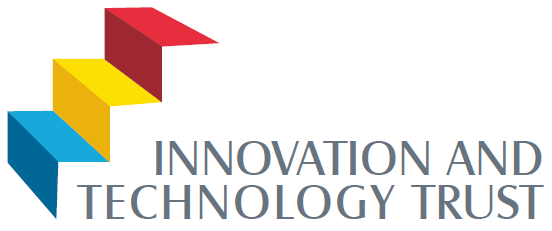Ruby Conference India 2011 - Logo
RubyConf India 2011
India's second RubyConf is happening in Bangalore in May 2011. RubyConf India is presented by the Ruby Community in India and supported by RubyCentral and the Innovation & Technology Trust.Royal Orchid Hotel, Bangalore
Program
The keynote addresses and list of proposals that have made it to this year’s RubyConf India 2011 are listed below:
| Day 1 - May 28th - Sat | |||
|---|---|---|---|
10:00 |
10:10 |
Kick-off |
|
10:15 |
11:00 |
Keynote - Building Rails Apps for the Rich Client |
|
11:00 |
11:30 |
Video Keynote - Why Ruby again |
|
11:30 |
12:15 |
Ruby Plus Rails Plus Your Application Minus Rails |
Single page Web apps with Backbone.js and Ruby on Rails |
12:30 |
1:30 |
Lunch |
|
1:30 |
2:15 |
Deciphering The Ruby Object Model |
|
2:30 |
3:15 |
Make your own Rails Framework |
I can haz HTTP: Consuming and producing HTTP APIs in the Ruby ecosystem |
3:30 |
4:15 |
Writing Compilers the Easy Way |
How Ruby helps Rackspace challenge Amazon |
4:30 |
5:00 |
A Quick Note from The Sponsors of RubyConf India 2011 |
|
5:00 |
5:45 |
Service (Keynote over Video Conference) |
|
| Day 2 - May 29th - Sun | |||
|---|---|---|---|
10:00 |
10:45 |
||
11:00 |
11:45 |
Let's have a cup of CoffeeScript |
Anti-Patterns and Patterns in Rails |
12:00 |
12:45 |
Continuous Delivery in Ruby |
MacRuby |
1:00 |
1:45 |
Lunch |
|
2:00 |
2:45 |
But the language supports it |
Test Load Balancer: Rocket Booster for your Build |
3:00 |
3:45 |
Software Quality and Test Strategies for Ruby and Rails Applications |
|
4:00 |
4:45 |
Rubyizing the Dev and Ops in an Enterprise |
Memory Is The New Disk, Say Hello To Redis |
5:00 |
5:45 |
||
The super cool yakuake/visor style drop down may not work in older versions (non CSS 3) of browsers. The overlay works ok on the iPad in portrait mode, but landscape is a little awkward. Sorry. But you can see all the talks here

RubyConfIndia::2011::Talks.new do |talk| talk.title "Software Quality and Test Strategies for Ruby and Rails Applications" talk.speaker :bhavin_javia talk.on :track2 => Day1.at(15:00) end
The Ruby and Rails communities have embraced testing and code quality as core values, and a rich ecosystem of tools has developed. Despite this support, many developers and teams overlook the creation of a test strategy as it is thought to be an unnecessary overhead that is traditionally associated with formal/waterfall style development methodologies. However, a well developed Test Strategy can be the difference between great software and a maintenance nightmare.
This presentation will explain the process of defining quality (internal and external) for Ruby and Rails applications including metrics and targets. It will then explain the process for creating and executing a Test Strategy that ensures the intended quality objectives are achieved. Additionally, it will explain how to align a Test Strategy with the typical practices of a team using Agile or Lean methods.
Learning Outcomes:
- Definition of Software Quality and appropriate metrics and targets
- Purpose and role of Test Strategy within an Agile development environment
- Creation of a Test Strategy tailored to suit Ruby and Rails applications
- Testing tool selection within Ruby ecosystem
- Approach and benefits to Ruby developers focusing on code quality

RubyConfIndia::2011::Talks.new do |talk| talk.title "Ruby Plus Rails Plus Your Application Minus Rails" talk.speaker :brian_guthrie talk.on :track1 => Day1.at(11:30) end


RubyConfIndia::2011::Talks.new do |talk| talk.title "Anti-Patterns and Patterns in Rails" talk.speakers :chirantan_mitra, :habibullah_pagarkar talk.on :track2 => Day2.at(11:00) end
Chiku and Habib will be pair-presenting their learnings in a way that mirrors the eternal tussle that a developer faces daily - convenience versus quality. One of them will assume the role of a devil and persuasively present a code-fragment that mirrored one such anti-pattern. The other will then take over as an angel and explain the problem inherent in that code-fragment, and proceed to clean it up. They will then swap roles and proceed to the next point.
At the end of this presentation, the audience will have the knowledge of identifying and subsequently fixing similar manifestations of these problems in their code.


RubyConfIndia::2011::Talks.new do |talk| talk.title "Test Load Balancer: Rocket Booster for your Build" talk.speaker :janmejay_singh, :pavan_k_sudarshan talk.on :track2 => Day2.at(14:00) end
In addition to balancing, TLB does other interesting things like re-order tests within a subset (set of tests that run on a partition) before they are executed. For instance, it re-arranges tests to execute failing ones (that failed in the previous build) first, hence ensuring early feedback.
Most build servers (like Hudson, Go, TeamCity, Bamboo, etc.) and even tools like capistrano/cluster-ssh provide parallel execution capability (capability to execute command(s) on different machines at the same time). However, parallelization of tests needs a tool that can decide what tests need to be run in each such parallely running process across machines. This is where TLB comes in.
This talk will introduce the audience to TLB concepts and include a demo of using TLB to partition RSpec and Test::Unit suites. It'll also include a case-study on how TLB helped cut build time from approximately 70 minutes to 11 minutes (which can of course be further reduced) just by throwing more hardware at it.
RubyConfIndia::2011::Talks.new do |talk| talk.title "Deciphering The Ruby Object Model" talk.speaker :karthik_sirasanagandla talk.on :track2 => Day1.at(13:30) end
In my presentation, I intend to talk about the Ruby Object Model, elaborating on the concepts of visualizing classes and objects in Ruby, how they are different from Java, method look-ups in Ruby, class/static methods in Java/C# vs. the ones in Ruby, mixins over inheritence and composition etc. All these concepts will be communicated by means of code snippets and no-nonsense visuals (object-like diagrams).

RubyConfIndia::2011::Talks.new do |talk| talk.title "Refactoring a Legacy Java Application to Rails" talk.speaker :nick_sieger talk.on :track1 => Day1.at(13:30) end

RubyConfIndia::2011::Talks.new do |talk| talk.title "How Ruby helps Rackspace challenge Amazon" talk.speaker :munjal_budhabhatti talk.on :track2 => Day1.at(15:30) end
- Developers investing time learning and programming the domain and not the framework
- Ease of refactoring for major domain changes such as ipv6, architecture
- DSLs allowed SMEs, instead of developers, to easily tailor business logic while reducing everyone's work load
- Powerful Enterprise integration with disparate system via Atom, REST, custom message queue, and even SOAP
- Realtime manipulation of interdependent systems for integration testing
- Ruby philosophies and communities
- Q&A

RubyConfIndia::2011::Talks.new do |talk| talk.title "Single page Web apps with Backbone.js and Ruby on Rails" talk.speaker :prateek_mohan_dayal talk.on :track2 => Day1.at(11:30) end
Frameworks like Sproutcore, Cappuccino and Backbone.js provide structure to your javascript code. Backbone supplies structure to JavaScript-heavy applications by providing models with key-value binding and custom events, collections with a rich API of enumerable functions and views with declarative event handling.
In this talk, we will go over building a simple Backbone.js application with Ruby on Rails backend and discuss some tricks and techniques that I have discovered while building supportbee.com. The outline of the talk is:
- Motivation for using a framework like Backbone.js. A quick comparison with Sproutcore and other frameworks
- Creating models, views and collections in backbone.js
- Setting up a controller to route requests (and preserve the back button behaviour)
- Setting up backbone.js to play nicely with Rails' ActiveRecord::Base.include_root_in_json
- Handlebars for templating
- Jammit for easily packaging all asset files (including javascript files for backbone's models, views and templates)
- Compiling handlebars’ template files and making them available to your code for rendering in a global variable
- Using as_json to customize the json serialization of Rails’ model
- A technique to make as_json use an included association’s as_json. The change can be seen at here
- Thoughts on testing a full page app. Also some thoughts on creating a restful API using restfulie


RubyConfIndia::2011::Talks.new do |talk| talk.title "But the language supports it" talk.speakers :niranjan_paranjape, :aakash_dharmadhikari talk.on :track1 => Day2.at(14:00) end
In this talk, we will cover various features provided by Ruby that, while awesome, should be used with caution. We will cover:
- The appropriate situation where a certain language construct should be used
- Situations where I've seen it misused
- The underlying principles that will guide you as to how to use it best.
- Alternative approaches that achieve the same effect
Here's a brief list of language constructs we will cover:
- if and switch-case
- return
- raise (exceptions)
- private/protected methods
- variable method arity (includes ActiveRecord style constructors that take any number of arguments tunnelled through a hash)
- Class methods
- Inheritance
- Custom instance allocators as factories (overriding Class#new)
- Re-opening classes, especially classes from the core libs
- eval

RubyConfIndia::2011::Talks.new do |talk| talk.title "Let's have a cup of CoffeeScript" talk.speaker :nicolas_sanguinetti talk.on :track1 => Day2.at(11:00) end

RubyConfIndia::2011::Talks.new do |talk| talk.title "MacRuby" talk.speaker :mark_madsen talk.on :track2 => Day2.at(13:00) end

RubyConfIndia::2011::Talks.new do |talk| talk.title "Designing High Throughput Web Service Clients" talk.speaker :sherin_c talk.on :track2 => Day2.at(15:00) end
This talk will:
- Weigh the tradeoffs in choosing a model by detailing an implementation each in:
-- JRuby (threadpool without GIL)
-- Ruby 1.8, 1.9 (eventmachine and threadpool with GIL) - Dispel misconceptions regarding choice of synchronous or asynchronous I/O

RubyConfIndia::2011::Talks.new do |talk| talk.title "Writing Compilers the Easy Way" talk.speaker :vishnu_gopal talk.on :track1 => Day1.at(15:30) end
The talk will detail the construction of a simple filter language and using Treetop to parse grammar and interpret it, and then make it work. Treetop makes it very simple and intuitive to add new operators and new syntax, and the talk will walk through the addition of a new operator to the language. Towards the end, a simple cross-compiler will be discussed that translates our filter language into fast C.

RubyConfIndia::2011::Talks.new do |talk| talk.title "Rubyizing the Dev and Ops in an Enterprise" talk.speaker :yashasree_barve talk.on :track1 => Day2.at(16:00) end
I would love to share my experience when the development teams embraced Ruby and Rails. The dev teams imbibed and personified the DRY concept by building and institutionalizing enterprise wide gems and plug-ins such as LDAP Management, Single Sign On, Authentication and Authorization, Usage Tracking. The team created an app that allows bootstrapping a new ruby application with enterprise specific plug-ins, configuring Continuous Integration, and deploying to shared dev box in minutes. The dev teams got hooked on to the engineering practices such as automation testing, automated deployments utilizing the power of Rails framework and components such as Capistrano. The adoption of Ruby truly changed the thinking and functioning of the dev teams.
I would also like to talk about how the operations teams opened their world to open source, specifically Ruby. After the initial resistance to open source, the Ops teams now love the Ruby and Rails infrastructure. Ruby gives them immense opportunity to maximise automation, monitoring and management of applications. The Ops team is now inching towards one click deployment of applications across environments, surely a dream come true in any enterprise.

RubyConfIndia::2011::Talks.new do |talk| talk.title "Continuous Delivery in Ruby" talk.speaker :srushti_ambekallu, :brian_guthrie talk.on :track1 => Day2.at(13:00) end

RubyConfIndia::2011::Talks.new do |talk| talk.title "Memory Is The New Disk, Say Hello To Redis" talk.speaker :bratish_goswami talk.on :track2 => Day2.at(16:00) end
The first part of the talk will walk the audience through the basic features of Redis, starting from the installation to the supported data structures and the simple command set to manipulate them along with some stats related to them. Through its Ruby port Redis-rb, Redis datatypes resemble datatypes of Ruby, which makes it very natural to the Ruby programmer to use it. The simplicity and the power of Redis with Ruby will be discussed in this part. This will include a parallel hands-on session depicting operations and snippets.
The second part of the talk will cover some real world use cases. Places where Redis with Ruby is used successfully and places where Redis can win. Detailed review of a few libs/apps built around Redis. Benchmarks, master-slave replication and Redis-cluster will be discussed. And finally, places where Redis is not a good fit.
The whole talk will circle around the concept of a perfect jugalbandi between Ruby and Redis.


RubyConfIndia::2011::Talks.new do |talk| talk.title "I can haz HTTP: Consuming and producing HTTP APIs in the Ruby ecosystem" talk.speaker :sidu_ponnappa, :niranjan_paranjape talk.on :track2 => Day1.at(14:30) end
Since a significant proportion of projects today require that APIs be both published and consumed, many of them wind up choosing Ruby as a platform for the reasons mentioned above. This talk is targeted at folks that are currently on such projects, or anticipate being on such projects in the future.
We will cover:
Consuming HTTP APIs:
- The basics of making HTTP calls with Ruby
- The strengths and weaknesses of Ruby's Net::HTTP across 1.8, 1.9 and JRuby (possibly Rubinius if we have the time to do research)
- Popular HTTP libraries that either make it easier to do HTTP by providing better APIs, make it faster by using libCurl or both
- Different approaches to deserializing popular encoding formats such as XML and JSON and the pitfalls thereof
Producing HTTP APIs using Rails:
- The basics of REST
- What Rails gives you out of the box - content-type negotiation, deserialization etc. and the limitations thereof
- What Rails fails to give you out of the box - hypermedia controls etc.
- What Rails does wrong - wrong PUT semantics, no support for PATCH, error handling results in responses that violate the clients Accepts header constraints etc.
- How one can achieve Level 2 on the Richardson Maturity Model of REST using Rails
- Writing tests for all of this
At the end of this, our audience will understand how you can both consume and produce HTTP APIs in the Ruby ecosystem. They will also have a clear idea of what the limitations of such systems are and what the can do to work around the limitations.

RubyConfIndia::2011::Talks.new do |talk| talk.title "Make your own Rails Framework" talk.speaker :pankaj_bhageria talk.on :track1 => Day1.at(14:30) end
SSome basic knowledge of Ruby is expected. I will teach some dynamic Ruby that is required for to follow this talk. Finally, we will develop a web framework that will be similar to Rails. Since we will be developing only the basic features, the number of lines in this solution will be very less. People would be astonished that we actually built a Rails framework in very few lines of code.
Why should we build our own framework when Rails already exists?
- Make the Rails black box more transparent, i.e. help us understand what's happening behind the scenes
- This will encourage people to go and hack the framework
- It will increase people's confidence which will encourage them to contribute to Rails

RubyConfIndia::2011::Talks.new do |talk| talk.title "Building Rails Apps for the Rich Client" talk.speaker :yehuda_katz talk.on :combined_track => Day1.at(11:00) end
In fact, because the Rails framework made an early bet on the REST architecture, it is extremely productive for building applications that mostly communicate over HTTP using JSON payloads. In this talk, Yehuda will talk about what makes Rails so good as the server for rich clients, and how to structure your application to take the most advantage of these properties.

RubyConfIndia::2011::Talks.new do |talk| talk.title "Service" talk.speaker :chad_fowler talk.on :combined_track => Day1.at(17:00) end

RubyConfIndia::2011::Talks.new do |talk| talk.title "The Good, the Bad, and the Ugly" talk.speaker :ola_bini talk.on :combined_track => Day2.at(10:00) end
In this talk, I would like to explore some of these aspects, with an eye towards what Ruby 2.0 will be, and what the language could look like if you started from scratch. The Ruby language and the Ruby ecosystem is a fantastic place to be, but the best feature of it is that we are not afraid of evolution.

RubyConfIndia::2011::Talks.new do |talk| talk.title "Happiness : Ruby :: Freedom : JRuby" talk.speaker :nick_sieger talk.on :combined_track => Day2.at(17:00) end
Closely intertwined with happiness, freedom is also infectious. The freedom to use the best tool to solve a problem. The feeling of being liberated from legacy code. The freedom to deploy your code anywhere. Using JRuby enables these situations with an extremely low friction and barrier to entry.
Ruby and JRuby are just programming tools. Can they really engender and promote happiness and freedom? As inanimate bits residing on spinning rust, perhaps not. But as the intellectual property of our community that connects us, empowers us to solve real problems and share our stories, the answer to that question becomes more positive.
